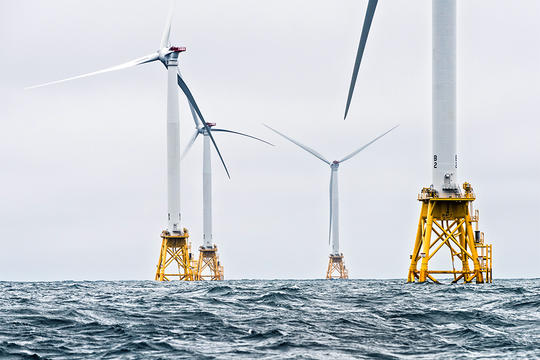A new analysis has found that renewable energy sources have now economically outperformed coal in the US to the point that maintaining 99% of the nation’s coal-fired power facilities would cost more than establishing a brand-new solar or wind-generating operation close by.
According to the study, building a set of solar panels or a group of new wind turbines and connecting them to the grid is less expensive than maintaining all 210 coal plants in the contiguous US, with the exception of one. This is due to the falling cost of renewable energy, which has been accelerated by last year’s Inflation Reduction Act.
“Coal is unequivocally more expensive than wind and solar resources, it’s just no longer cost competitive with renewables,” said Michelle Solomon, a policy analyst at Energy Innovation, which undertook the analysis. “This report certainly challenges the narrative that coal is here to stay.”
The new analysis, conducted in the wake of the $370bn in tax credits and other support for clean energy passed by Democrats in last summer’s Inflation Reduction Act, compared the fuel, running and maintenance cost of America’s coal fleet with the building of new solar or wind from scratch in the same utility region.
Read also: FEMA approves $18.5 million for climate-resilient infrastructure in Puerto Rico
On average, the marginal cost for the coal plants is $36 each megawatt hour, while new solar is about $24 each megawatt hour, or about a quarter cheaper. Only one coal plant – Dry Fork in Wyoming – is cost-competitive with the new renewables. “It was a bit surprising to find this,” said Solomon. “It shows that not only have renewables dropped in cost, but the Inflation Reduction Act is also accelerating this trend.”
Coal, which is a heavily carbon-intensive fuel and responsible for 60% of planet-heating emissions from electricity generation, once formed the backbone of the American grid, generating enough power to light up 186m homes at its peak in 2007. However, by 2021 this output had dropped by 55%, while jobs in the coal mining sector have more than halved over the past decade, to less than 40,000.
Most of the US coal plants are ageing and increasingly expensive to maintain, while their fuel source has been widely displaced by cheap sources of gas. Environmental regulations, which Donald Trump vowed to roll back in an unfulfilled mission to revive the coal industry when president, have also imposed costs on the sector by enforcing cuts to toxic emissions such as mercury and sulphur dioxide.
Coal production hit a 55-year low in 2020 but the industry saw subsequent signs of an uptick in the wake of Russia’s invasion of Ukraine, which pushed up the price of energy worldwide and saw pressure on countries to find an alternative fuel source to Russian gas.
Supporters of coal contend it is a reliable fuel source at a time of instability and has attacked Joe Biden for attempting to shift the US away from fossil fuels. “Forcing essential coal capacity off the grid – without reliable alternatives and the infrastructure to support them – will only deepen reliability and economic challenges,” said Rich Nolan, president of the National Mining Association, in November.
“Look to our friends in Europe, who blindly rushed to close coal plants at a rapid pace and are now working from Germany to Denmark to bring those same plants back online. The global energy crisis is real and imposing costly burdens on people around the world and here at home; taking deliberate steps to intensify that crisis is reckless and unthinkable.”
While coal is in long-term decline it is unlikely to disappear in the immediate future – many utilities are still deeply invested in the fuel source and the scale of renewable infrastructure, including energy projects, new transmission lines and battery and other storage to cope with intermittent delivery, isn’t yet vast enough to trigger a mass shutdown of coal. But analysts say the broader trends, bolstered by last year’s climate spending, look set to call time on the era of coal.
This story was adapted from The Guardian.
